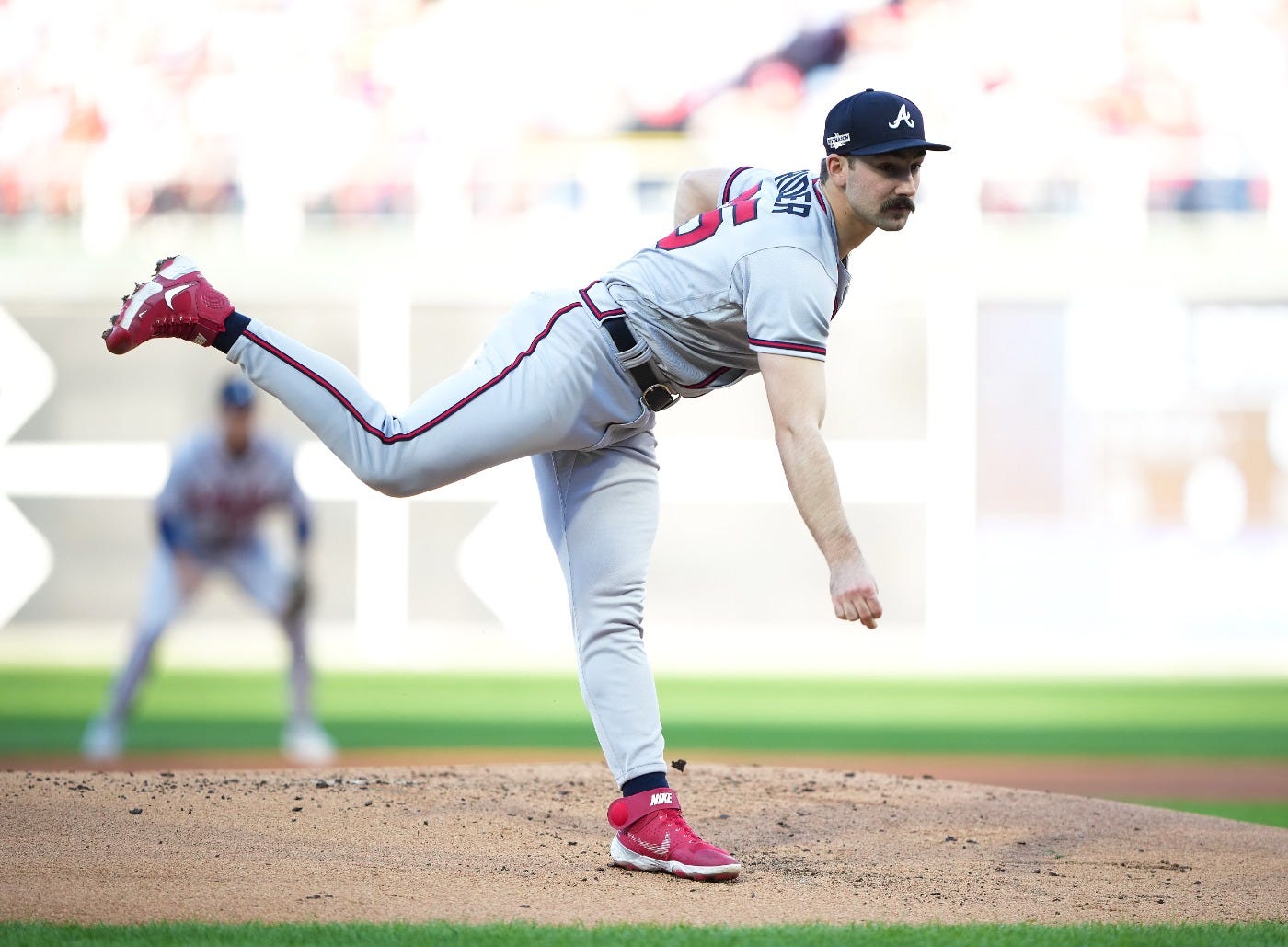Why Stuff+ Matters (When Used Correctly)
How to balance the overuse and underuse of advanced metrics
I’m continuously amazed by how advanced baseball analysis has become. There are so many smart people in the public space — writers, podcasters, creators of models, etc. I often find myself unable to keep up with all of it. Whenever I have a topic I want to explore, three more ideas grow from it. A few more tweets get bookmarked for later. And many articles get added to my reading list.
One area of modern analysis that I thought was borderline revolutionary to begin 2022, was Stuff+ models. It’s my belief that Eno Sarris one of, if not the, smartest baseball minds we have. He built a Stuff+ model, tested it to ensure it was predictive in certain ways, and has applied it to his own analysis. Last season I wanted to know more, and I began using it in my own writing as well.
For those unfamiliar, Stuff+ captures the physical properties of an individual pitch and compares it to other similar pitches the model has seen before.
That’s about it.
The model isn’t intended to be anything more than that. It isn’t a player’s entire value boiled down to a single number. It’s a tool.
And I think this has been lost in translation.
There’s been some pushback against some “advanced stats” recently, both Stuff+ numbers as well as player Statcast pages. Some of this is warranted. Just like Stuff+ isn’t mean to be the end all, be all — those red/blue sliders on a player’s Baseball Savant page aren’t either.
The above image is descriptive. But it isn’t everything.
Eno and Chris Welsh actually had a great discussion about this in a recent episode of Rates and Barrels. Over the offseason, Jeff Zimmerman covered the same topic in this Fangraphs piece.
As of May 2023, the use of expected stats in fantasy baseball analysis is neither a universal advantage or disadvantage. That definition depends on how you apply them.
Do you literally never visit Baseball Savant pages or peruse Statcast leaderboards? You’re probably at a disadvantage relative to your league mates.
Are Savant sliders your number one (or only) factor in making a decision? Then you’ve gone too far.
This ability to weave in and out of when Statcast matters is a critical skill for playing fantasy baseball. The same can be said for Stuff+.
Perhaps my favorite use case for Stuff+ is to use it as a validator. Think about Bryce Miller’s big league debut. He looked incredible via the eye test. I’m not sure we needed Stuff+ to tell us he might be good. But I can safely say that once he popped in Eno’s model, especially his fastball, I was all in. It gave me the confidence to increase my FAAB bid that week.
This most recent Yankee start aside, I’m pretty pleased with the results. It isn’t just about Bryce, though. I used Stuff+ as a validator for Taj Bradley, Mason Miller, and Bobby Miller as well. Stuff+ also put me onto Louie Varland — not as a no-doubt star, but as someone who deserved a deeper dive.
The model didn’t love Gavin Stone, so I proceeded with caution there.
Last season it led us to being early on Spencer freaking Strider.
And Jhoan Duran. And Felix Bautista. There’s value in small samples here.
The other use case for Stuff+, and this is just a theoretical idea that I’m still workshopping, is that strikeout upside might matter more than ever in this post-shift world of pitching.
A number of contact suppressers have struggled more in 2023 than we’re used to — Sandy Alcantara, Alek Manoah, Julio Urias, etc. I’m wondering if K/9 dominance (and pitchers not even letting the ball in play) is in a transition phase of being undervalued.
Strikeouts have always mattered of course, but now they might count double. I think Stuff+ might be able to help us find the very best starting pitchers, and could also help us avoid early-to-mid round land mines (this year’s Manoah for example) in future seasons.
An example of Stuff+ going too far is to see Graham Ashcraft ranking 5th among all SPs this year, and to treat him as a stud without further investigation. There’s nuance to this form of analysis. Ashcraft doesn’t have a good fastball. Basically his entire Stuff+ number comes from his slider, which is great, but as we also learned from Clarke Schmidt, pitchers need more than that. Plus his home park sucks.
This is where tacit knowledge comes into play (if you’re unfamiliar with the topic then I recommend this piece from fantasy football writer Ben Gretch).
Stuff+ is a tool that can help us see that “whoa, Hunter Greene ranks very high by this metric”, but it requires tacit knowledge to then factor in his command, absence of a third pitch, and his brutal home park (yes I’m tilted by Cincinnati this year).
If one day Greene develops a useful changeup and is traded to Seattle then we can go back to his Stuff+ numbers and tell ourselves “you know what, he has an elite fastball, a really good slider, a new pitch, and a better run environment to pitch in. I want to be overweight on Greene this season.”
That’s how Stuff+ can be used as a tool.
I once wrote a macro-level piece for Patreon subscribers titled “How to be the best dynasty manager you can be.” I outlined three big-picture ways to have a leg up on your competition. But I ended it by stating the obvious — that simply picking the best players has always been the best strategy to winning at fantasy sports.
I’m pretty certain that utilizing Stuff+ in the right circumstances helps you do just that.




